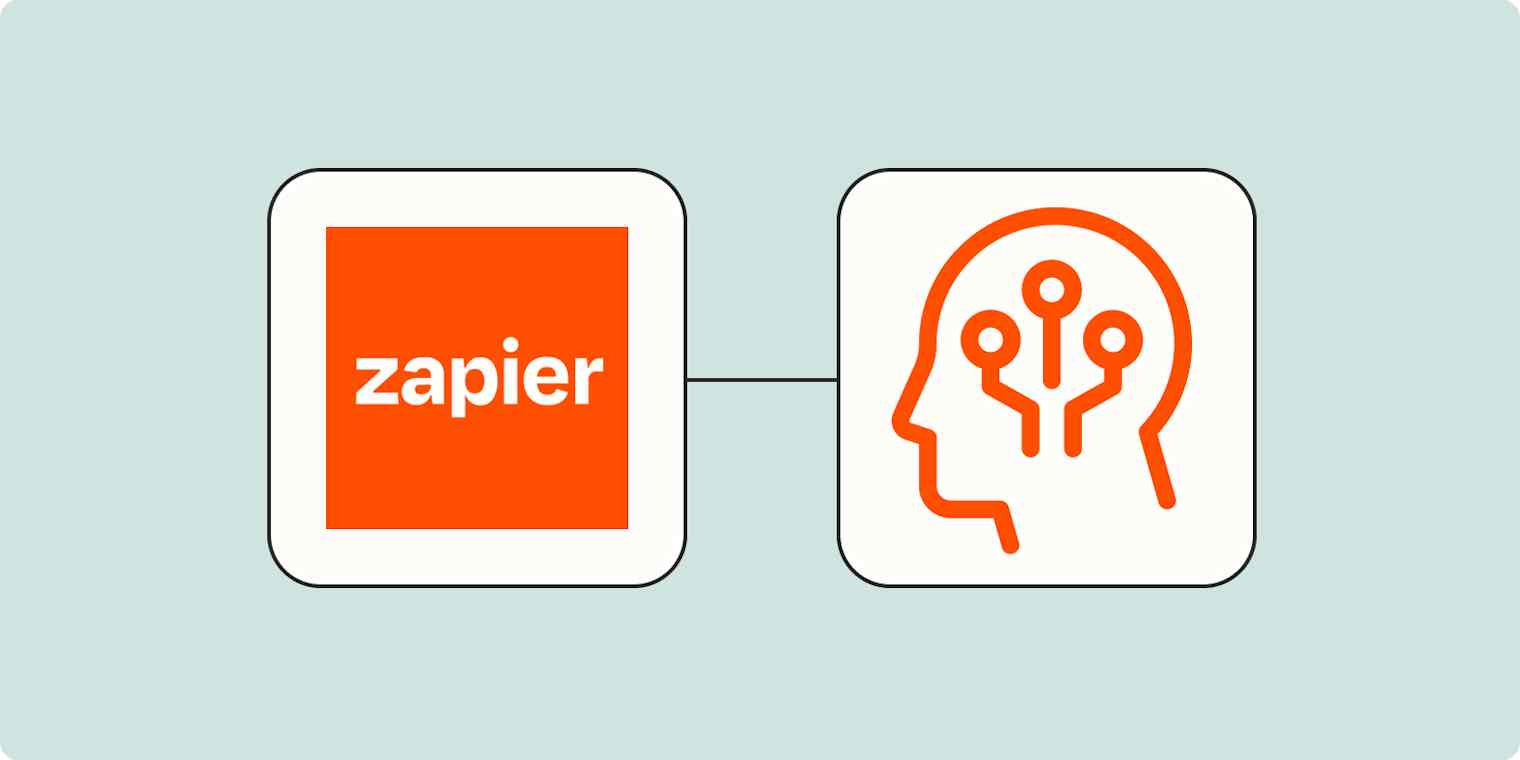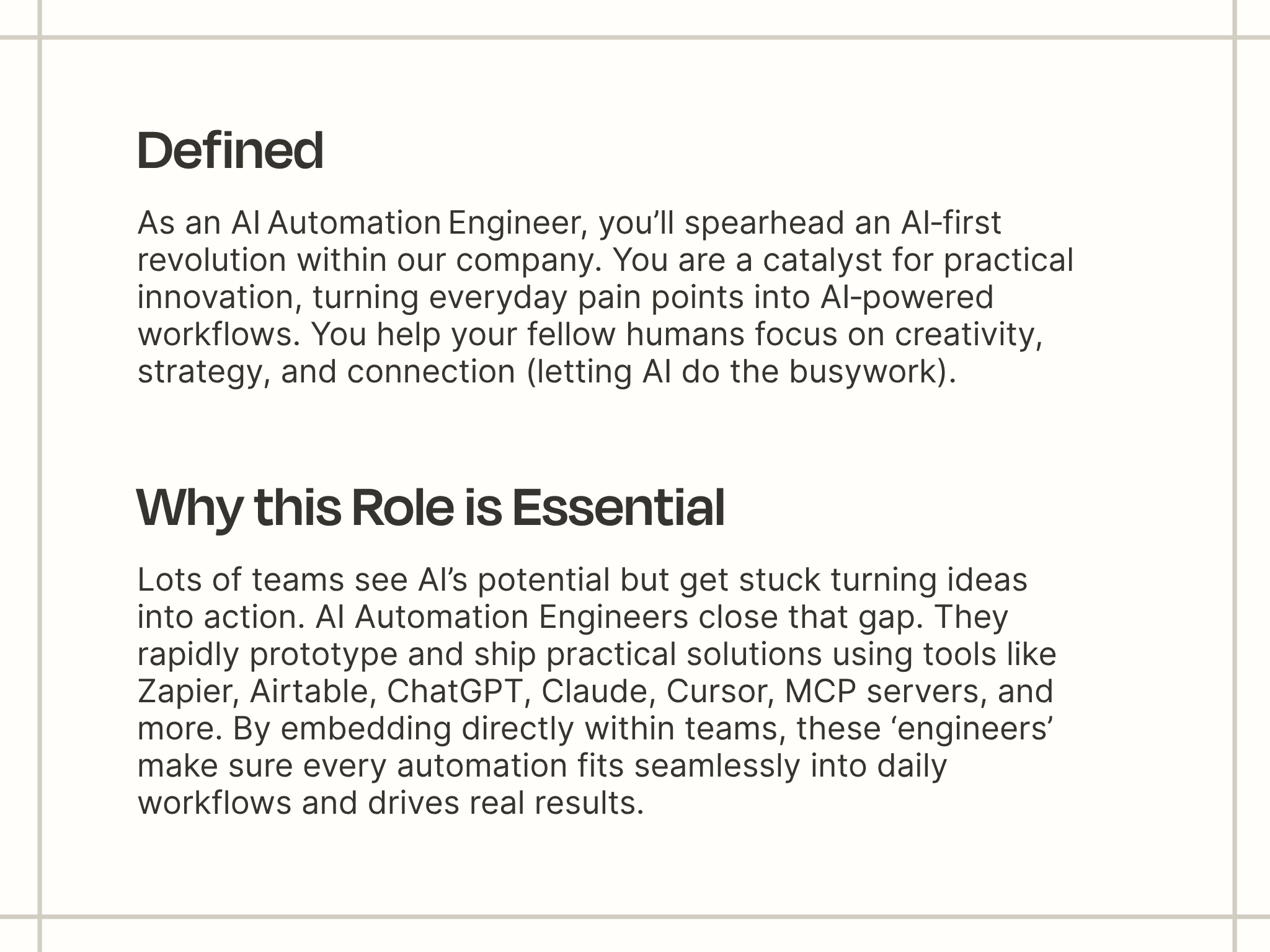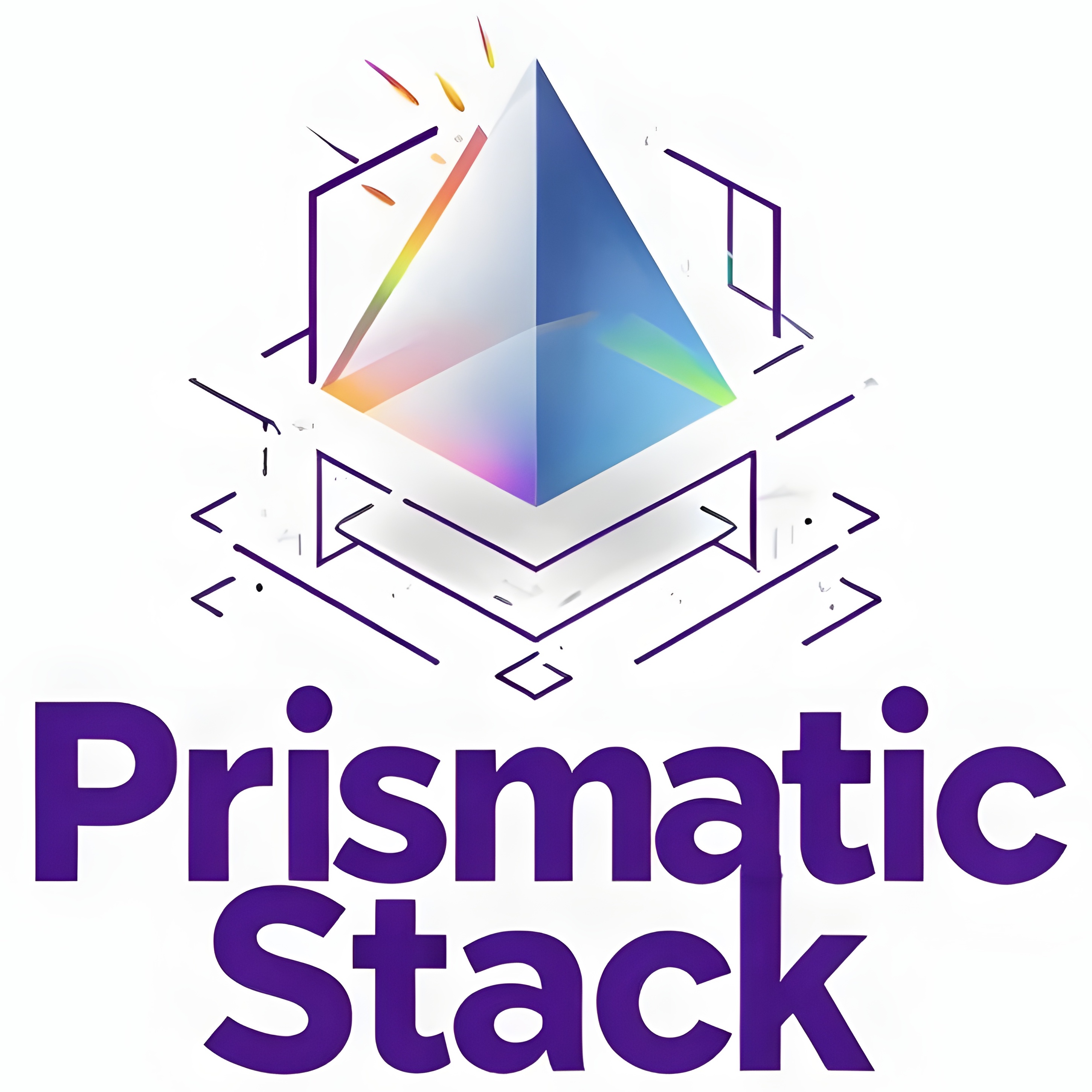From Product Management to AI Automation Engineering…

TL;DR
- AI Automation Engineering is accelerated product management.
- Speed and tool fluency are the new differentiators for product leaders.
- The barrier to entry is low (thanks to no/low-code and prompting); the career upside is high.
- Start by automating real work: prototype, measure, and share impact - then scale what works.
Product Managers are best positioned within organisations to prototype, ship, and measure AI‑powered automations. Regardless of company size, speed wins, and a builder/strategist hybrid role can deliver it. Zapier (who will be worried about n8n) were recently loudly promoting an AI Automation Engineering role (that personally resonated)... See below:

1. Why I expect this role to become popular
Ultimately, products can be valuable, rare, difficult to imitate, but I’ve learned first-hand that any competitive advantage is unsustainable if employee time is spent on mind-numbing busywork and/or work where confidence levels are low.
AI automation engineering shifts the focus from manual, repetitive tasks to high-leverage, creative problem solving - unlocking both speed and satisfaction for teams.
| Old PM pain point | What AI now enables | Why execs care |
|---|---|---|
| Weeks of spec‑writing, ticket juggling, and politics | Prompt‑driven prototypes in hours | Faster learning loops |
| Manual hand‑offs between SaaS & BI tools | No/low‑code orchestration (Zapier, n8n, v0, Lovable) | Fewer “swivel‑chair” workflows |
| Fragmented data & CMS bottlenecks | AI‑powered tagging, automated copy testing, generated insights, multilingual variants | Strengthened prioritisation and marketing, personalisation scales |
| Repetitive ops work | Agentic automations embedded in business tools | Lower error rates, better analytics, freed headcount for strategic work |
| Hard‑to‑prove ROI | Real‑time usage & cost telemetry baked into LLM/iPaaS stacks | Clear cost‑vs‑savings story that unlocks budget |
| Sparse eng capacity | Non‑devs can build & iterate MVPs | Growth without hiring armies |
2. How Andrew Ng’s 2025 playbook supports the proposed role shift
Andrew Ng implicitly supported this proposed product team responsibility shift at a recent Y Combinator AI Startup School Talk (watch here). I've summarised below.
- Execution speed is the #1 predictor of startup success.
- The biggest opportunities sit at the application layer, not model R&D.
- Agentic workflows (tools that think/revise in loops) outperform linear prompting.
- Concrete, buildable ideas beat grand but fuzzy visions.
- Cheap compute & AI tooling make code disposable; rebuild your stack when it gets in the way.
- Engineering speed is so high that some teams now suggest 2 PMs per engineer to keep up…
Translation for product leaders: Andrew Ng’s message compresses to an equation: 10× faster engineers ➜ code becomes cheap ➜ decision & feedback loops become the bottleneck...
Those loops - product discovery, rapid prototyping, validation - sit squarely in PM territory. If a PM still waits on hand‑offs for every prototype tweak, the organisation forfeits speed advantages (stupidly). The fix is for PMs to own the first‑pass building: spin up a Zapier flow, stitch an agent in LangChain, measure impact in real time, then invite engineers to productionise what’s already proven.
That left‑shift of 'building' responsibility is precisely the Automation Engineer mindset. It’s worth noting that this mindset aligns with what I shared here:
3. Mapping Zapier’s Automation Engineer remit to classic PM work
| Zapier AE bullet | Traditional PM muscle | Net‑new skill |
|---|---|---|
| AI Workflow Triage | Problem framing, discovery | Automation scoping and evaluation frameworks |
| Rapid Prototyping | Validate solution fit | Prompt chaining, agent builders |
| Embed with Teams | Shadow users, change management | Facilitation of AI adoption (easier to convince/teach) |
| Scale Internal Tools | Ship v1, iterate | Observability, lightweight dev ops |
| Teach & Evangelise | Stakeholder comms | AI governance, helping evolve responsibilities |
| Measure & Optimise | OKRs / Metrics | Cost‑to‑serve, RAG, output feedback |
4. What actually changes day‑to‑day
- Specs → prototypes/agents. You’ll demo working prototypes instead of discussing documents (though don’t forget to clarify your thoughts with documents!)
- Roadmaps ↔ strategy ladders with ROI mapped. Success is hours saved, error‑rate drop, and LLM spend per task.
- Jira/Linear tickets shrink. You fix prompts and/or commit PRs yourself such that your best engineers are reserved for the highest impact work.
- Tech‑stack choices become two‑way doors. Per Ng, throw away codebases when they slow you down.
6. Org & hiring implications
- Talent: Pair an Automation Engineer (pick a tech-savvy PM please; we’re best positioned!) with one platform engineer per squad instead of hiring a full stack team for every workflow.
- Process: Run 2‑4 week “embed & automate” sprints; leave a maintained zap/agent + metrics dashboard.
- Culture: Celebrate time‑to‑impact, not just feature velocity; reward deletion of redundant code.
7. Key takeaways
- AI Automation Engineering, as described, is accelerated Product Management.
- Strategy & storytelling stay vital; speed and tool fluency are the upgrade.
- The barrier to entry (low‑code, prompting) is low; the career upside is high.
- Start on your own turf: save your team 10 hours next week with a quick automation, and you’re already acting like an Automation Engineer.
Ready to experiment? Pick a repetitive task today, prototype an AI workflow, and share the before/after numbers. Your stakeholders will thank you - and perhaps so will your career trajectory.
Checklist to Start Your Automation Engineering Journey
Identify a repetitive task in your workflow.
Prototype an AI-powered automation (Zapier, n8n, v0, etc).
Measure the time/cost savings and error reduction.
Share the before/after results with your team.
Iterate or productionise if impact is proven.
Repeat for another workflow; build your automation muscle.
Want advice or a sounding board? Book a call
Written by Alexander Chrisostomou • Published 15/07/2025 • Last updated 15/07/2025
